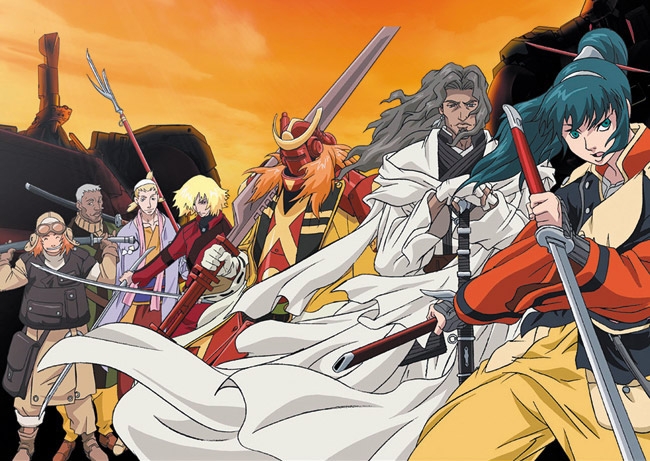ART of the SWORD
Anyone who grew up watching old black-and-white samurai movies, such as Seven Samurai, will enjoy the updated anime incarnation Samurai 7. Both feature similar plot lines, with agricultural fields and sword-clad battlers, but the latter throws in a robotic samurai, futuristic planes and cities, and loads of engrossing manga-style creativity. Both selections will be screened at the Samurai Film Festival at Honolulu Museum of Art’s Doris Duke Theatre. In all, seven classic films will play, and before each, free anime episodes will be shown. Providing additional commentary and vibrancy to the genre is a simultaneous exhibition of samurai armor at the museum: Lethal Beauty.
art_2
“What’s interesting is combining the classic films with something more current and something that probably appeals to a different audience,” says docent extraordinaire Shawn Eichman, the museum’s curator of Asian art. “We’re hoping it will be an opportunity for generations to share their interests – for an older audience to be introduced to animated features and for our younger audience to be introduced to classic samurai films.”
The amount of information that pours forth from this man’s well of knowledge is fathomless. His tour through the exhibit begins in a hallway, where a striking pair of samurai lunge with swords drawn, ready to leap from the wall. They’re giant reprints from small, centuries-old woodblock prints, but have a vibrant, modern flair. Also lining the hallway are Japanese war banners. The inner chambers of the show are comprised of several rooms, each showcasing a full set of armor. Each space flaunts its own feel, one showcasing ancient swords, another helmets, and another muskets.
Most of the intricate armored sets are ceremonial, but at least one served its protective function, its breast-plate bearing the telltale dings and scratches of combat. The helmets are fantastical in shape, meant to strike fear into the enemy (form of a bear’s head) or sometimes display one’s family trade (decorated with chopsticks and sake bowl).
The exhibit paraphernalia belongs to private collectors, so seeing it is a rare treat. Rather than having it lay in a sterile box, it’s propped up so that the audience can connect on a more tangible level. Look closely at the sword handles, which bear the bumpy skin of rays for better grip, as well as beautifully woven textile layers, an art unto itself, one that is dying. Standardization had not yet arrived, so each sword and suit of armor was custom designed to exquisite effect. A lacquered case bears decorations made from hawk eggs, and giant screens from the 1400s depict legendary battle scenes in intricate detail.
The muskets, which arrived with the Portuguese, the practice of burning everything the enemy owns -which is why not many artifacts survived the battles -and chest plates on display all address some of the scenes from that most notable classic Seven Samurai.
“Tying the exhibit into the film series, the films are one reinvention of samurai culture in the same way that Star Wars is a reinvention of samurai culture,” notes Eichman. “Darth Vader’s helmet was modeled after a Japanese original, and light sabers are modeled after Japanese swords. Video games are yet another reinvention of samurai culture. Woodblock prints are, in a lot of ways, the beginning of the manga tradition. You can take all of those reinventions and come to this exhibition and see what it was that inspired them. Then you can go to the films and see how they were reinvented to give them a new relevance to a new audience. These are ways to experience one phenomenon from a lot of different angles.”
The formats all cross-reference each other, so that whatever background experience you walk in with, you walk out with a vastly expanded field of knowledge.
the TICKET stub
SAMURAI SUMMER
When: Samurai Festival films run June 21-July 3; exhibit is open through Aug. 18
Where: Honolulu Museum of Art
Cost: Museum/exhibit admission, $10; films, $10 each
More info: 532-8700, honolulumuseum.org






